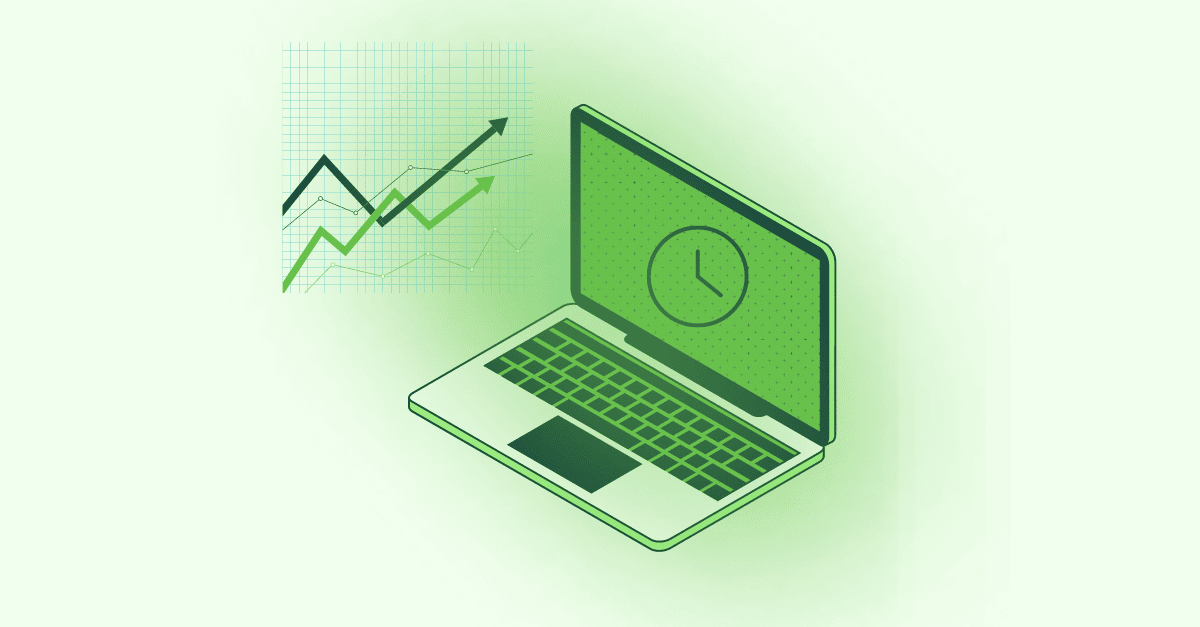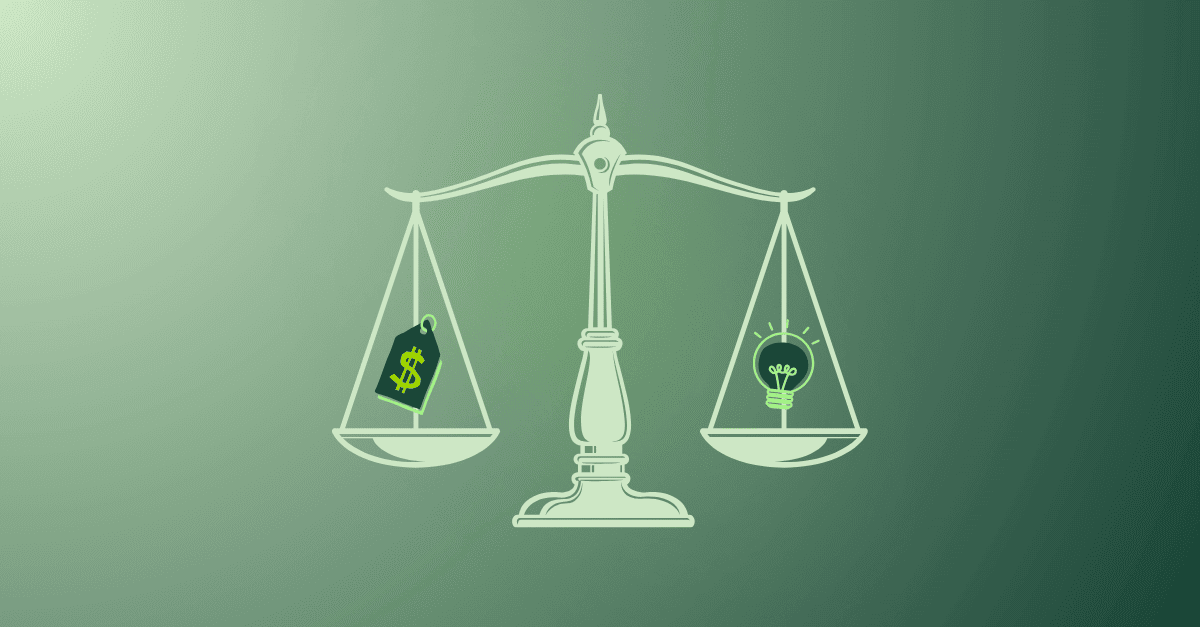Modern revenue models impact how revenue is recognized, adding further complexity to a largely manual process. However, automation can streamline revenue recognition, saving time and resources, increasing visibility, and reducing the risk of failing to comply with regulations.
Customer experience has become an even greater competitive differentiator as the world has adapted to the new normal brought about by the pandemic. According to research by Salesforce, 80% of consumers believe the experience delivered by a company is equally as important as the products or services it sells.
This applies as much to a company’s revenue model as any other aspect of the customer journey. Since launching in 2007, Netflix has revolutionized the way we consume. People have become accustomed to the convenience offered by subscriptions, and the business model has expanded to a broad range of products, from razors to books and food.
Lately, evidence has emerged that consumers are starting to suffer from subscription fatigue. Netflix may have pioneered streaming services, but viewers can now choose from hundreds of options. Research by audience targeting consultancy GWI shows that 36% of consumers are frustrated by the cost of multiple subscriptions, while nearly 20% feel they have signed up for too many. Consumers want greater control over how they buy, which has led to a shift to modern revenue models based on consumption.
These trends drive customer expectations in B2B sales too, as companies add new services and on-demand options to their existing offerings. Data from the 2021 State of Usage-Based Pricing Report, published by OpenView Venture Partners, showed that 45% of software-as-a-service developers used a consumption model in 2021, up from 27% in 2018. The report also found that companies employing usage-based pricing outperformed their peers in customer acquisition cost payback and net dollar retention, suggesting this model will continue to gain traction in the coming months and years.
Impact on Finance Teams
Sales teams are eager to adopt modern revenue models that meet customer needs because they improve their chances of converting prospects and deepen existing relationships. However, the evolution outlined above puts an additional burden on revenue accountants.
Meeting the requirements of the ASC 606 or IFRS 15 revenue recognition standards is relatively straightforward for a one-time purchase because the point in time at which a company satisfies a performance obligation is clear. But the process becomes more complex when accounting for recurring revenues generated by models like subscriptions and consumption combined. How recurring revenue is recognized depends on the structure and pricing of sales contracts, meaning revenue accountants must break down the elements so they can determine when their company delivers against each performance obligation.
“It’s not just what you sell, but also how you sell it and the flexibility offered to customers, which adds complexity to revenue accounting.”
Amanda Martinez Carrillo
Director of Business Development at Connor Group
The two key revenue recognition standards are ASC 606 and IFRS 15, which both came into effect at the start of 2018. While addressing the differences between these standards is outside the scope of this article, the five-step revenue recognition model is essentially the same:
- Identify the contract with a customer
- Identify the performance obligations
- Determine the transaction price
- Allocate the transaction price
- Recognize the revenue when the entity satisfies the obligation
Accommodating various modern revenue models increases the pressure on revenue accountants because their job – already time-consuming and resource-heavy because it’s mostly performed manually using spreadsheets- becomes even more complex.
But this added complexity is unavoidable. Companies need to show greater flexibility, especially in response to the disruption caused by the pandemic, to remain competitive. That means revenue accountants, who sit within traditionally one of the more siloed departments in a company, must collaborate closely with the sales team. Proactively closing this gap provides visibility into contracts and allows revenue accountants to define and apply rules from the inception of an agreement rather than conduct a manual review after it has been implemented.
How changing revenue models create complexity
Each revenue model has nuances that add complexity to the revenue recognition process. What follows is a brief outline of the impact these nuances have on the most common models and how tech solutions can address the challenges they present.
One-time Plus Subscription
As mentioned previously, dealing with a standalone one-time charge is typically straightforward. The revenue is recognized when the company satisfies the obligation. But sometimes a one-time charge is combined with a subscription, for example when selling a product such as a Peloton bike with a membership package for its streaming workouts. Combining these two models creates complexity because they require different recognition methods.
The recurring charges must be broken into monthly revenue installments, while the one-time charges may need to be tracked separately and manually recorded as delivered. The complexity of managing different revenue models as a single contract could create compliance risk and impact visibility and reporting.
Having to complete this process manually is time-consuming. It puts a heavy burden on revenue accountants working for a company with a high volume of sales based on subscriptions, especially as it scales.
An automated solution makes such a difference because it allows the accounting department to set rules for standalone and one-time plus subscription modern revenue models, saving time and reducing the cost of human resources required to complete manual processes.
Milestones
Revenue generated from one-time charges isn’t always recognized when billed. In some cases, it’s included in a rateable billing schedule where revenue is also recognized based on milestones. These milestones typically link to an event, such as the different stages of a project. When each portion of the obligation is delivered, the corresponding revenue needs to be recognized.
Combining one-time charges with milestones adds complexity because service teams have to track time and materials while reporting the value of deliverables for each milestone. ASC 606 introduced flexibility for recognizing revenue as incurred rather than having to straightline all performance obligations over the contract term, but flexibility without the right technology results in manual workarounds. That can involve tracking emails from multiple parties or notifications from internal systems. For example, a company may perform an obligation after a customer activates an account by logging in to a platform for the first time. Milestones also hinder visibility for reporting and analytics.
A revenue recognition software automates the process of tracking events by leveraging application programming interfaces (APIs) which connect a company’s platform directly to its accounting systems. This allows revenue accountants to track the quantity, percentage, or amount of the obligation the customer uses and link milestones to the corresponding revenue treatment.
Consumption
The consumption model, which links revenue to customer usage of a product or service, creates complexity because of how sales teams structure contracts. Some contracts are negotiated at zero dollars because the company doesn’t know how much the customer will use. That means it can’t bill until they start using the product or service in question, and revenue accountants can’t forecast how much revenue the contract will generate until they can analyze usage data in arrears.
In other cases, the customer might agree to a minimum or maximum commitment over the life of the agreement. They can use their allowance at their own pace, which the company must track. To complicate matters further, the contract may include a ‘use it or lose it’ clause, so the customer has to pay for the commitment regardless of whether they use it.
A contract may also include a commitment for a specific period, such as monthly. However, this type of agreement is subject to amendments if the customer maxes out its usage in the first couple of months and the company has to offer an early renewal, provide an add-on or revisit the pricing model. This scenario creates complexity in two respects.
Firstly, the company must shift to on-demand offerings, which involves keeping track of what the customer uses and any add-ons. And secondly, creating co-termed contracts without systems to support the link between multiple orders for the same customer hinders visibility.
Another challenge presented by the consumption model is how to bill customers. Companies typically bill in arrears, which means revenue accountants run a report on the first day of the new billing period showing how much a customer used in the previous period.
The complexity occurs when revenue accountants are still reporting on the previous period when the new billing period starts. While billings and revenue do not have to occur in the same period, a dependency on data and processes again hinders visibility and often delays the closing of the books due to manual reconciliations.
A solution that allows revenue accountants to decouple revenue from billings for the same deliverables, addresses these challenges and helps to streamline the entire process, no matter what the scenario, and lowers the risk of failing to comply with an audit. It’s essential that finance teams use a solution that accounts for these variable pricing structures as it’s necessary for finance teams to forecast future revenue and make strategic business decisions based on expected revenue. Solutions that can accommodate point-in-time, recurring, proration, and consumption structures ensure that finance has the flexibility to keep up with the upstream needs of the sales teams.
Discounts
Customers expect discounts. Everyone knows there’s a difference between the list price and the sell price. It’s the responsibility of revenue accountants to set a threshold, so the sales team isn’t too generous.
The transaction price in step three of the revenue recognition model is when revenue accountants must take into account the discount. But the complexity comes in step four when analyzing the standalone selling price (SSP), especially if the company combines several discounted products or services in a single contract.
When a sales team offers a discount, revenue accountants have to validate it against the standalone selling price in order to determine if revenue needs to be allocated across performance obligations, and if so how much. This process is typically manual, involving data analysis and securing the agreement of different stakeholders such as auditors and managers.
The company may also have to justify its SSP based on how much its competitors charge, which involves keeping a record of the products sold and discounts offered. Without a system to support this analysis, revenue accountants manually calculate and set new thresholds for revenue allocations using a spreadsheet.
Completing this process manually is cumbersome, error-prone, and creates risk. Audit costs soar because the company must pay the auditor to recreate each audit sample transaction. But the SSP calculation is crucial, not just to comply with revenue recognition standards but also to analyze sales and plan future strategies.
Revenue recognition software can automate this process, setting a rule to determine which products to include in this assessment and what the SSP should be. If the company already knows its SSP, a revenue automation software can automatically apply it, validate it against a discount band and allocate revenue across performance obligations for eligible goods and services as product offerings evolve.
Sales promotions:
Revenue accountants must complete a similar calculation when offering items free of charge to a customer, such as a trial period or product to complement a purchase of software or hardware.
Sales teams like promotions because they help to secure a sale, and customers are happy to receive a free gift. However, they create complexity and increase risk because revenue accountants have to assign a value to the item nonetheless, a process typically completed manually.
$0 dollar lines in a contract aren’t a new concept, but free trial periods associated with subscription and consumption models have introduced complexity. If revenue accountants don’t have a system that supports free trials combined with the one-time plus subscription model, they have to evaluate contracts on a case-by-case basis.
Again, revenue recognition software can automate this process and reduce risk by providing configurable rules to manage how and when to recognize and allocate revenue for contracts with sales promotions, creating an audit trail, and ensuring accuracy in calculating allocatable revenue against SSP.
Why do you need an automated solution?
To summarize, modern revenue models present challenges for the revenue recognition process, but an automated solution addresses many of these challenges:
- Legacy processes and systems are labor-intensive, inefficient, and error-prone. Integrated tech solutions create a single platform for revenue contract management and reporting across all products and services, regardless of the number of revenue models employed.
- The right solution is flexible, allowing users to customize rules, design intelligent revenue protocols and reporting dashboards, automate calculations, and seamlessly integrate with a company’s existing systems.
- Automation future-proofs the revenue recognition process with built-in capabilities to accommodate new sales models adopted by a company as it grows.
- Revenue recognition software hosted on the cloud is easily scalable, so it keeps up with a company to support growing transaction volume and performance capacity.
- Compliance requirements also create complexity for revenue accountants. Revenue recognition software ensures companies comply with the latest regulations and provides transparency across the entire order process, from issuing a quote to the final step of recognizing the revenue from the transaction.
A modern, complete revenue automation solution focused on lead-to-revenue visibility is an essential tool for finance teams. It not only automates ASC 606 and IFRS 15 compliance, but it allows them to make informed decisions by gathering lead, contract, billing, and revenue data in a single system.
RightRev is a complete revenue subledger, built using Salesforce’s native lead-to-cash data. RightRev’s advanced rules-based framework maps data with Salesforce to create a harmonious data model which is shared with both sales and finance teams. However, regardless of CRM, RightRev can leverage data from existing CRM’s or databases and connect unique revenue treatment to each product, service, or type of performance obligation to your entire suite of products and services.
To find out how RightRev can help your company to quote and sell seamlessly while streamlining revenue recognition for compliance with the latest accounting requirements, schedule a demo today.




